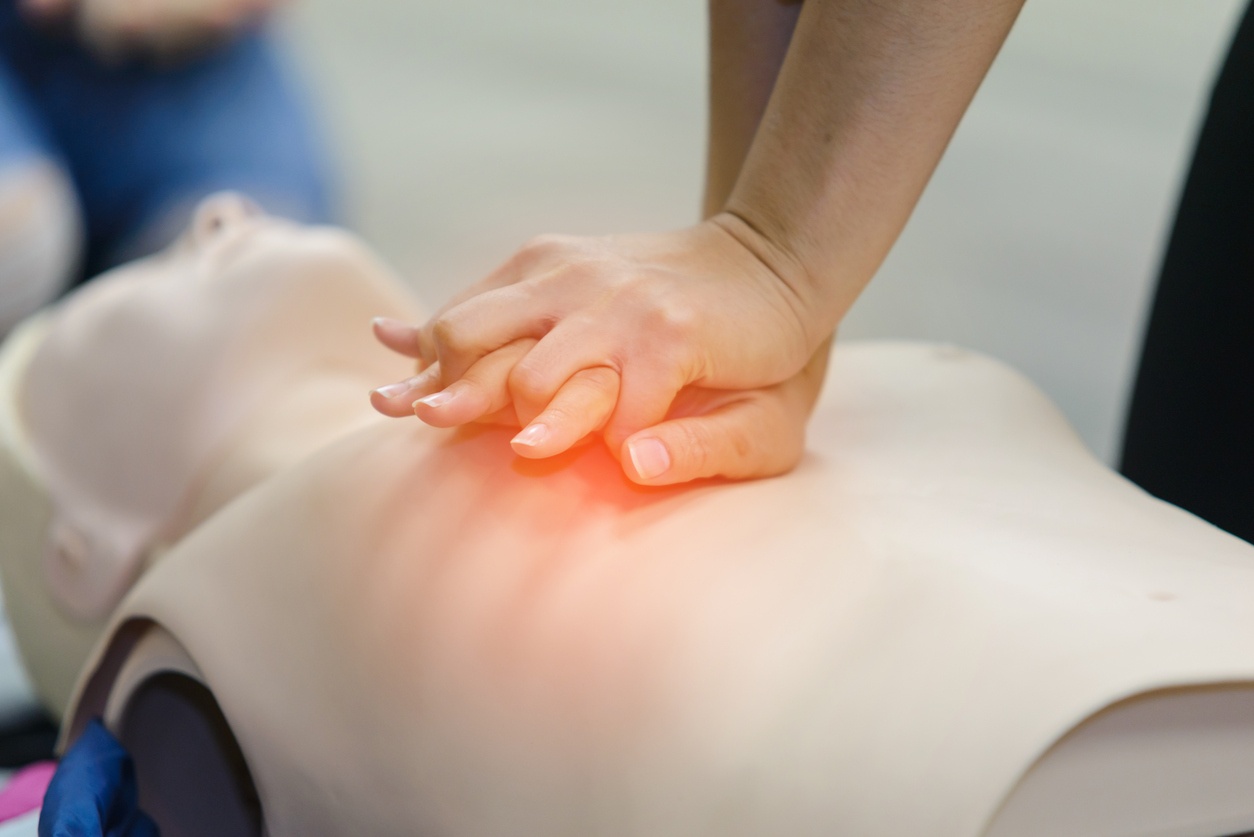
In August of 2017, the American Heart Association (AHA) issued a directive that will take effect on January 31, 2019 requiring the use of a feedback device in all their adult cardiopulmonary resuscitation (CPR) courses. These devices should “provide learners with real-time, audio-visual corrective feedback on aspects such as compression rate, depth, and recoil.”
Manufacturers of healthcare education supplies immediately responded, releasing a range of feedback options (known as QCPR devices). The range includes different interpretations of feedback.
Here’s a quick guide to what a feedback device must accomplish:
- Real-time feedback: The instructor should know how the learner is doing, but they probably won’t be present if the learner performs CPR in a real-life scenario. It’s crucial for the learner to receive real-time feedback during CPR training and apply that feedback to their psychomotor skills.
- Compression rate and depth feedback: Rate and depth are minimum standards in all QCPR feedback devices. If a device doesn’t provide rate and depth feedback, it is not compliant.
- Recoil feedback: Recoil is part of AHA’s optimum standards, so it is not required for compliance. However, recoil is crucial to refill the heart’s chambers during compressions. If a device does not provide this feedback, the instructor should.
- Hand placement feedback: Hand placement is another optimum standard. High-quality CPR requires proper hand placement. It can be easily conveyed with a simple illustration on the device and instructor feedback.
- Perfusion feedback: In CPR, the goal is to circulate oxygenated blood through the body and to the brain. If a learner is performing CPR at an appropriate rate and depth, there should be perfusion to the brain. CPR feedback devices allow the learner to see this demonstrated to better understand the time needed to reach effective organ perfusion, and the effort required to maintain it.
- Recorded feedback: Some devices provide real-time feedback that is lost the moment the learner completes their simulation. For an instructor to adequately assess the learner’s effort, feedback should be recorded and immediately used in debriefing.
Which of the above types of feedback should an instructor look for? That depends entirely on their goals. Instructors should consider the following devices when making a purchasing decision.
- Manikin accessories and upgrades: These devices are typically simple and economical. They can be placed on top of a manikin during compressions. Compliant devices provide real-time rate and depth feedback. They may or may not provide real-time recoil feedback or recorded rate and depth feedback. They do not provide hand placement feedback. Heartisense™ can be used with any manikin to make it AHA compliant.
- Brayden Manikin: Aero Health’s Brayden Manikin provides real-time visual feedback that learners without a medical background can understand. The device reflects rate, depth, and perfusion with interior lights. These devices do not record, so they cannot establish objective proficiency for the instructor. However,Brayden boasts an impressive, out-of-box functionality. Just add batteries.
- Little Anne QCPR: Laerdal’s Little Anne QCPR Manikin shows simple, real-time feedback on depth, rate, and recoil through a free app that can be downloaded to any phone or tablet using an Apple® or Android® operating system. In addition to real-time feedback, the device tallies and records the learner’s proficiency in a simple percentage for the instructor’s use.
- Brayden Pro CPR Manikin: Aero Health’s Brayden Pro Manikin provides visual, real-time feedback on rate and depth as well as different brightness of light to reflect quality. Data is recorded to an intuitive app to display a timeline of performance in eight (8) key CPR metrics.
- Resusci Anne QCPR: Laerdal’s Resusci Anne is for current or future medical professionals. It provides real-time and recorded feedback on depth, rate, recoil, as well as an added cardiac rhythm introduction during training. Comprehensive performance reports can be printed by instructors for debrief.
For more on Pocket Nurse’s QCPR solutions, visit the Pocket Nurse website.
Sources:
AHA Requirement on Use of Feedback Devices
Feedback Device Specifications for CPR Instruction
Full Recoil CPR is Essential to Saving Lives, In Pulse CPR







